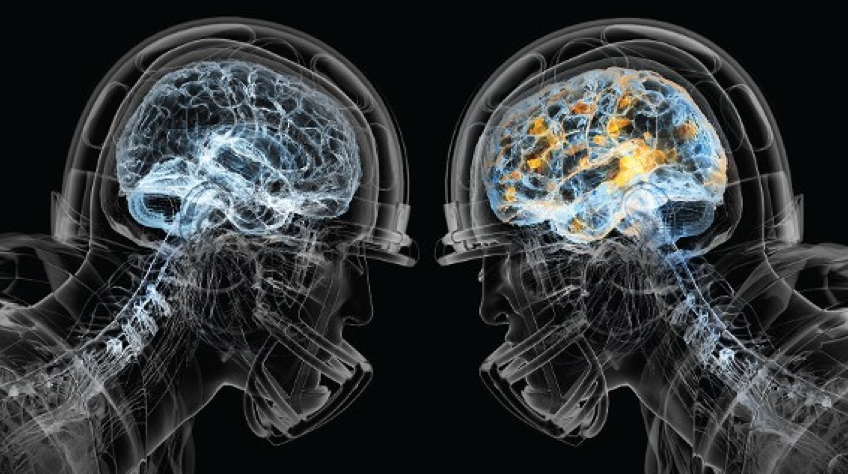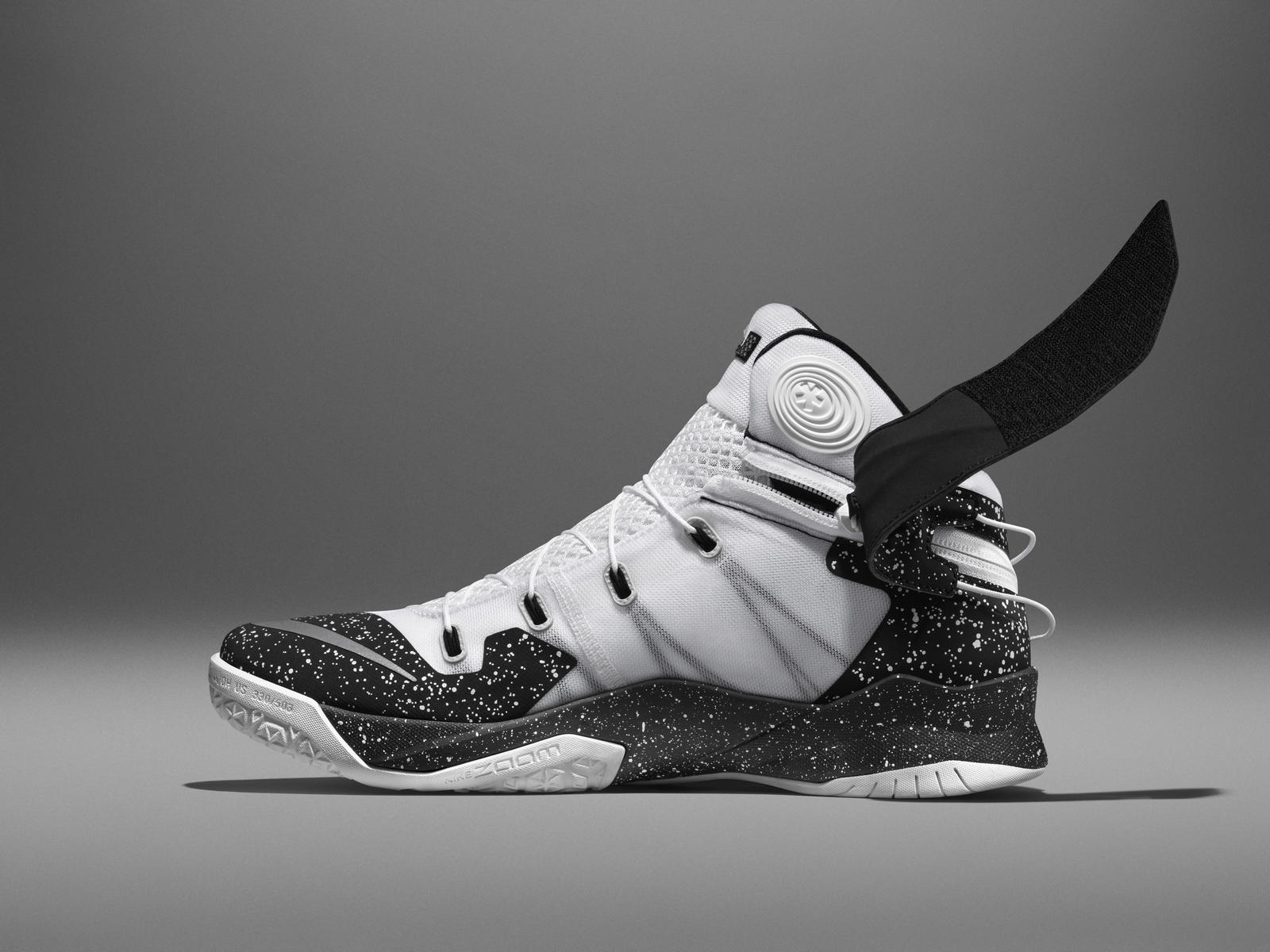myHIN Blog
Category: Wearable Technologies Articles

February 25, 2016
Mind Games
I remember playing high school football and being told that the game is as much physical as it was mental. I spent hours each week in the training room, film room, weight room, or practice field preparing for the game ahead, and wanting nothing more but to win. Like most athletes, we played through injuries, and it was expected, but head trauma was treated differently. I have clear memories of teammates, and even my younger brother, sitting out for multiple games because of concussions. I had friends end their involvement in all contact sports because of the head injuries they incurred, while still in high school. During my short athletic career I watched head injuries be taken increasingly serious through the improvement of preventative measures like helmets, and more stringent recovery procedures for athletes.
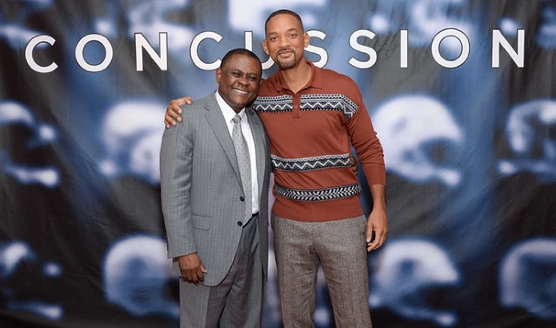 The new film, Concussion, starring Will Smith, takes a look into the NFL’s gradual shift in perspective concerning the nature of the repetitive collisions that define the game. The movie speaks to the reluctance of the organization to accept any wrongdoing, as well as their hesitance to buy into the daily dangers presented by the game to those who play. The film features footage of the car crash that led to the fiery death of Justin Strzelczyk, a former member of the Pittsburgh Steelers, in-game collisions, and a reenactment of Dave Duerson’s suicide. These clips are woven throughout the film to portray the urgency needed by those who are at risk for chronic traumatic encephalopathy (CTE), found in many former NFL players due to repeated trauma on the brain, resulting in concussions. CTE showed its head through lapses in memory, headaches, sensitivity to light, outbursts, depression, and a gamut of other debilitating symptoms.
The new film, Concussion, starring Will Smith, takes a look into the NFL’s gradual shift in perspective concerning the nature of the repetitive collisions that define the game. The movie speaks to the reluctance of the organization to accept any wrongdoing, as well as their hesitance to buy into the daily dangers presented by the game to those who play. The film features footage of the car crash that led to the fiery death of Justin Strzelczyk, a former member of the Pittsburgh Steelers, in-game collisions, and a reenactment of Dave Duerson’s suicide. These clips are woven throughout the film to portray the urgency needed by those who are at risk for chronic traumatic encephalopathy (CTE), found in many former NFL players due to repeated trauma on the brain, resulting in concussions. CTE showed its head through lapses in memory, headaches, sensitivity to light, outbursts, depression, and a gamut of other debilitating symptoms.
 As the discussion surrounding mental illness continues to grow, I am reminded that ailments of the brain go unseen. There is no visible bruise, no blood or fractures that we can see, but the recovery is just as severe. I am glad to see an increased vigilance paid towards mental illness, but hope the conversation about CTE does not limit the scope to end at how the NFL will use the emerging research, but instead to a broader perspective of caring for mental illnesses is adapted. As I age I do not only worry for my childhood sports heroes, but also for the plethora of people dealing with untreated mental illnesses. We must continue to be proactive to fight the stigma of mental illness, in all aspects of society.
As the discussion surrounding mental illness continues to grow, I am reminded that ailments of the brain go unseen. There is no visible bruise, no blood or fractures that we can see, but the recovery is just as severe. I am glad to see an increased vigilance paid towards mental illness, but hope the conversation about CTE does not limit the scope to end at how the NFL will use the emerging research, but instead to a broader perspective of caring for mental illnesses is adapted. As I age I do not only worry for my childhood sports heroes, but also for the plethora of people dealing with untreated mental illnesses. We must continue to be proactive to fight the stigma of mental illness, in all aspects of society.
Follow us @myhealthimpact on Twitter for more on #health and #tech topics.
Share

December 03, 2015
The Evolution of Sneaker Design Technology pt1
Over the years I have owned just about every kind of sneaker imaginable. Ranging in price from $35 to over $200, if it was hot and my mom could afford it, they were on my feet. From classic Chuck Taylors to Italian owned Filas and even the GOAT Jordans that still outsell just about every other sneaker on the market today. I’ve been in love with footwear for a very long time. From fancy colorways to exclusive collabs, I never thought about the evolution of sneakers until a few years ago when I developed shin splints during a routine workout. It was at this very time that I thought to myself, what percentage of this pain was caused by the shoes on my feet? As a trained computer scientist, I did what most technologists would do call the family podiatrist open up Google search and fire off a few queries. What I got back was pretty interesting:
- Could Your Shoes Be Giving You Shin Splints?
- Worst Shoes for Your Foot Health
- How Shoes Cause Flat Feet and Overpronation
- How Does Your Arch Height Affect Your Shoe Choice and Injury Risk
Not only did my search expose certain brands but styles of shoes too -- ultra high heels, flip flops, and ballet shoes were all known to cause foot problems. I was pretty alarmed at the findings and wanted to know if anyone was looking into solving these types of foot problems through the next generation of footwear design.
Both Adidas and Nike had already invested a good bit of money into their Research and Development division to solve unique problems. Adidas was working on FutureCraft 3D (via YouTube), a unique 3D-printed running shoe midsole which can be tailored to the cushioning needs of an individual’s foot. While Nike took on accessibility by literally reinventing the zipper on performance sneakers. They developed Flyease technology, a system that solves a problem for amputees, stroke victims, and people with cerebral palsy. By using a subtle zipper that snakes around the heel, they were able to let you peel open and close your shoe with one hand.

Neither of these two technologies are widespread yet but I am excited to the see impact foot health has on shoe manufacturers moving forward. With 3D printing, more durable and breathable materials and a conscious customer, someday we’ll live in a world where foot problems are alleviated not created by the shoes we throw on in the morning.
Tweet @myhealthimpact to let us know what you think and tune in for the latest and greatest in #tech, #STEM, #wearables and #health focused blogs!
Share

January 25, 2015
Not Another Wearable Technology
As smartphones have become more commonplace in today’s society, technologists have been in search of the next big thing. We’ve gone from adding touchscreens to everything (home appliances, car infotainment systems) to using gestures to interact with the world around us -- think the Minority Report.
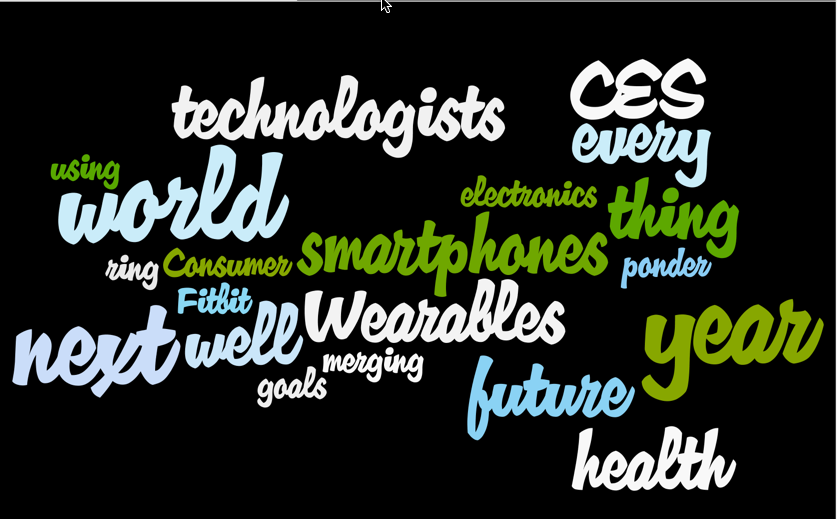
After all, the future world we live in is just a guess or figment of the imagination. This magical nature of tomorrow is on display every year at the Consumer Electronics Show (CES) down in desert plaid Las Vegas. Where high rollers shell out tons of money on personal bets and invest in small start-ups that hail from all over the world. The comos surrounding CES has been a bit different the past few years, as more savvy players have introduced hardware at the center of their enterprise. Wearables, the heir to smartphones are slowly sweeping the conference floor. From recognizable names like Fitbit and Pebble to up and comers with Android Wear as their understudy -- every manufacturer has tossed their hat in the ring.
Besides telling the time, they all claim to do one thing well: help you reach your fitness goals.
- track steps
- take pulse
- measure blood pressure
- monitor heart rate
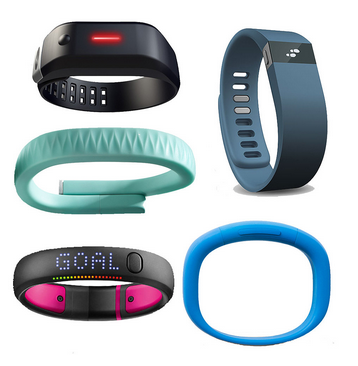
That was last year!
In 2015 the trend is now shifting towards real health applications:
- diagnose skin cancer
- examine menstrual cycle
- tell how well your lungs are working
- transmit physiological information to doctors
- treat depression
- and so much more…
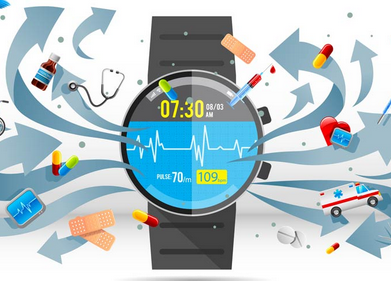
With electronics and health care merging together ever so slightly, technologists will no longer have to ponder about what’s next. Wearables will cement the next revolution that is as fashion forward as it is helpful in quantifying your life.
Stay tuned to @myhealthimpact for more discoveries and technology driven solutions to a healthier future.
Share

October 29, 2014
Killing Two Birds with One Pebble, Wearable Technology
Do you need a smartwatch? Probably not, but at the same time, we don’t really need cell phones either. Now what does a smart watch have that my cell phone can’t give me? Well, to be honest, nothing. I’m not here to give a sales pitch, but to give you a better visual on how I use my Pebble watch. Pebble watch you say?, the thing that came out last year? Yes. You mean that thing that only displays in black and white? Yes. You mean that watch that doesn’t even have a touch screen? YES!!!
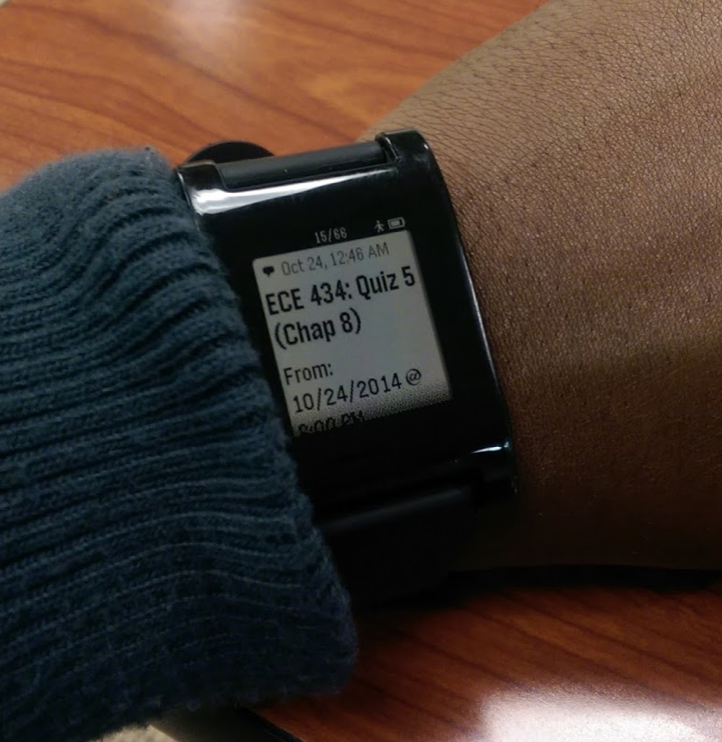
Now the Pebble watch is not the latest tech in wearables but its still great. The biggest problems with wearable technology now, is the never ending questions, “why would someone want to wear this?” I can tell that the people who had to test the usability of this device knew what they were looking for. There are some key features that I truly love about this watch. Heres some key features:
Key Features
- Read text
- Haptic Feedback
- Event reminders
- Pedometer
- Controls music (Soundcloud)
- Battery Life (5-7 days)
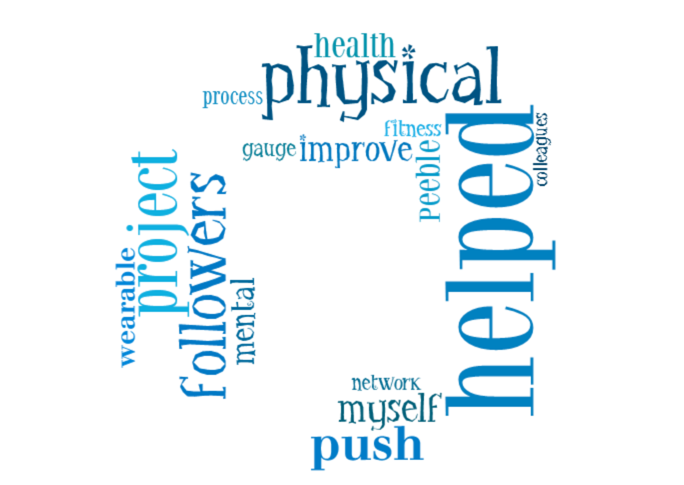
Follow us at @myHealthImpact as we continue to discuss important topics around technology and your physical health.
Share

February 16, 2014
Smart Condoms: Could These Be The Best Condoms Created to Date?
As we all know condoms do not prevent all sexual transmitted diseases (STDs) and sexual transmitted infections (STIs) during sex. Well why not build a better condom. Last November the Bill and Melinda Gates foundation received over 812 entries for the “Build-a-better-condom” competition. A reported 11 entries received a grant of $100,000 to produce their condoms and hopefully bridge the gap for condom innovation. This is where tech meets health.
Talk about a smart condoms. Some of these entries range from polymer based composite materials to biologically engineering material for a “significant enhancement for male pleasure.” These “next-gen” condoms may be what consumers are looking for when taking safe sex more seriously.
Developer Lakshminarayanan Ragupathy from Trivandrum, India, has an entry named “The warm embrace”, which incorporates composites for high heat transfer, but also drugs that would enhance safety. Not only is his design super thin and strong, it’s also very flexible.
Now here’s a question, how much would you pay for a condom that you couldn’t feel and worked 99.99% of the time?
Follow us at tumblr.myhealthimpactnetwork.org (Tumblr)
Follow us on twitter: @myhealthimpact
Share

February 21, 2013
Tracking your Health with Wearable Technology
At the top of every New Year, there seems to be a fitness trend that propagates through families, colleges, and churches, alike. The notion that this year is the perfect time to get into the best shape of your life is evident on social networks, such as Facebook and Twitter. Hash tags like #teamGetFit, #trainHard, and #bodyProud are a select few that are seen everywhere and even appended to statuses and tweets posted around the world. A lot of the time, the motivation behind this burst in healthy behavior corresponds with New Year's resolutions or the mere fact that some over indulged during the Thanksgiving and Christmas holidays! However, as the months past by and the year gets old, fitness clubs and sport gyms see a constant decline in membership and weekly attendance. Whatever the reason may be, I set out to find if this year was any different than in year's past.
In comes CES 2013, the Consumer Electronics Trade Show where the biggest tech news is announced for those of us who have a deep affinity for smart devices and innovative gadgets. Originally seen as the place where power hitters, such as Apple, Microsoft, Samsung, and Amazon, have unveiled new products, its recently transformed into the "IT" place where the little guys bring us the most joy. Welcome to the future, where your body is technology's new frontier. The mobile applications and computing power we've become accustomed to in our smartphones are starting to migrate into wearable devices. Whether it is the Nike+ Fuelband from our favorite sneaker brand, fitbit, the same company that added style to Bluetooth earpieces or the Fitbit Ultra by an upcoming start-up company focusing on health and fitness devices; the ability to upload and analyze your personal training sessions can now be done on the fly without the need of paper and pencil. Figures 1 and 2 show a quick glance of each company's wearable devices and corresponding mobile applications.
Figure 1.
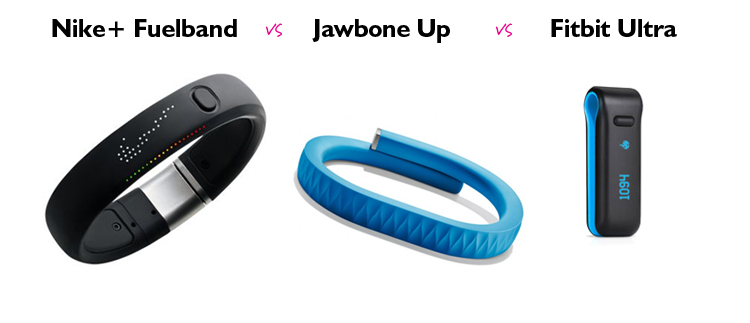
Figure 2.
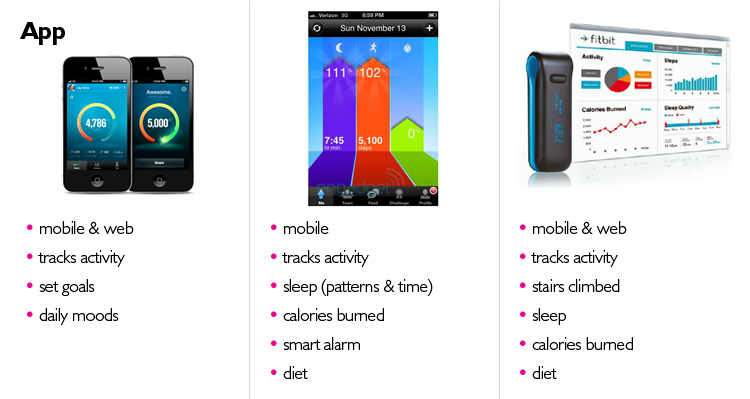
POLL: Does being able to track your fitness activity and sleep patterns, interest those committed to fulfilling their New Year's resolution? Does mobile health “fit” into your commitment to your personal health and wellbeing?
Sources:
Figures 1 and 2 - FashioningTech
Share
In Partnership with: Poole College of Management, College of Humanities and Social Sciences, National Science Foundation, Penn State
Take Action, Get Tested: Find Your Local Testing Center Why Get Tested?

